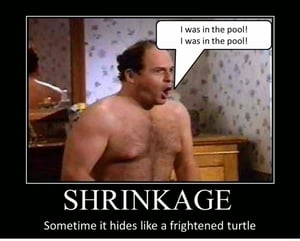 Most bars do inventory in order to address the basic functions of knowing what needs to be ordered each week and calculating liquor cost. At Bar-i, we take the inventory process a step further by measuring product level performance. This advanced level of the inventory process is accomplished by precisely measuring what’s missing for every product you serve at your bar.
Most bars do inventory in order to address the basic functions of knowing what needs to be ordered each week and calculating liquor cost. At Bar-i, we take the inventory process a step further by measuring product level performance. This advanced level of the inventory process is accomplished by precisely measuring what’s missing for every product you serve at your bar.
This data allows us to calculate certain higher-level metrics such as:
- Achievable liquor cost – Identifies what your liquor cost would be if every drink was rung in properly and poured according to specification (after comps and other real-life factors are accounted for)
- Wholesale loss – Lets you know the dollar value of what’s missing based on the wholesale price you paid to purchase this product from distributors
We’re going to focus our discussion on wholesale loss since this provides you with an important tool to determine the real cost of inventory shrinkage to your business’ bottom line. When we use the term shrinkage, we are referring to the amount of product you use which isn’t actually sold.
What Does Wholesale Loss Represent?
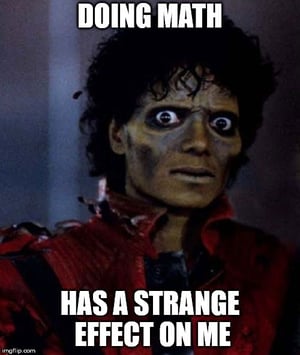 Bear with us now. We’re about to drop some math on you. I know you probably got into the bar business to avoid doing math (another reason to hire a third-party inventory provider like Bar-i), but inventory involves crunching numbers, and well…that’s math. We promise to keep the math as non-technical as possible while still fully explaining this concept.
Bear with us now. We’re about to drop some math on you. I know you probably got into the bar business to avoid doing math (another reason to hire a third-party inventory provider like Bar-i), but inventory involves crunching numbers, and well…that’s math. We promise to keep the math as non-technical as possible while still fully explaining this concept.
OK now that you’ve been warned, here we go…
If you sold 100 Jack Daniels drinks during the last inventory period, we’ll see that the Jack Daniels POS button was pressed 100 times when we run your sales report. If you have a 1.5 oz. pouring assumption for standard cocktails, we should find that 150 oz. of Jack Daniels were used when we perform our inventory count (100 drinks x 1.5 oz. = 150 oz. of Jack Daniels).
If these drinks were slightly overpoured (by 20%), then we’ll find that 180 oz. of Jack Daniels were poured instead of the 150 oz. required to make those 100 cocktails. What did those missing 30 oz. of Jack Daniels cost your bar?
- 1L bottle of Jack Daniels costs you approximately $25
- This bottle contains 33.82 oz. of liquor
- Therefore, you are essentially missing a full 1L bottle in our example where 30 extra ounces were used than sold
- This equates to roughly $25 wholesale loss for Jack Daniels during this particular inventory period
At Bar-i, we report this wholesale loss for every product you sell when we send you our weekly inventory reports. We can provide you with this figure because it’s a known, certain figure. We know precisely how much product is missing (our scales are accurate to the hundredth of an ounce) and we know how much was paid for the product. Therefore, we can easily calculate the dollar value of this missing product.
While this wholesale loss figure represents the amount of money you spent on product that was missing, it doesn’t exactly tell you the entire story. In reality, you lost significantly more than $25 in profits due to this missing bottle of Jack Daniels.
What’s the Real Cost of this Wholesale Loss to Your Business?
A different way to look at this question is to evaluate what the retail loss would be for the $25 wholesale loss that occurred when an entire bottle of Jack Daniels is missing. For the purposes of our example, we’re going to assume you have a 20% liquor cost for Jack Daniels. This 20% figure is right in the middle of the range we typically see with our clients’ liquor cost (13-30%).
If you have a 20% liquor cost for a product, it means that every time you buy the product, you typically sell it for five times the amount you paid for it. In this scenario, you’d multiply the $25 of missing Jack Daniels by 5 to arrive at a retail loss of $125.
Problem with Calculating Retail Loss Strictly based on Liquor Cost
There is a slight problem with the $125 retail loss figure we arrived at above. It’s a meaningful figure in the sense that it tells you the amount of money you’d have made if you sold all of this missing product at full retail value, but in real life you will almost never capture full retail dollars for all of your missing product.
Often there are other factors that cause drinks to be sold below full retail value, including:
- Happy hour discounts and other drink specials
- Comps
- Spills
- Overpoured drinks
In real life, the amount of money this missing product costs you actually depends on the reason it’s missing:
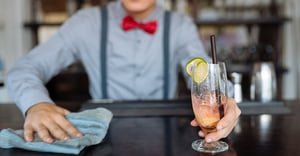 Spilled (1:1 ratio) – If your bartender spills the drink while making it or the customer spills it while grabbing it off the bar, the bartender will remake the drink at no additional charge. In most instances, bartenders don’t account for these spilled drinks when ringing up the cocktail served to the customer (they just ring up the one drink that was actually served).
Spilled (1:1 ratio) – If your bartender spills the drink while making it or the customer spills it while grabbing it off the bar, the bartender will remake the drink at no additional charge. In most instances, bartenders don’t account for these spilled drinks when ringing up the cocktail served to the customer (they just ring up the one drink that was actually served).
In this instance, it just costs you to replace the Jack Daniels that was spilled. Based on the figures being used for our example, the cost of this missing drink to you is approximately 75 cents. If the entire missing bottle of Jack Daniels was due to spills that weren’t accounted for when the drinks were rung in, then the real cost of this missing product to your bottom line is the $25 spent to purchase the bottle. In other words, your wholesale loss would also be the real cost of this missing product.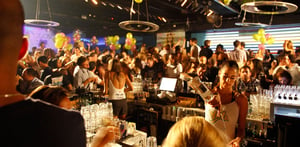 Forgot (5:1 ratio) – It’s really busy behind the bar and your bartenders are cranking out drinks as fast as they can to get all of your customers served in a timely manner. In order to get drinks out faster, your bartenders aren’t ringing them in as they go, but instead they just made a huge wave of drinks and then rang them in after getting through this busy wave. When he finally rang these drinks in, your bartender accidentally forgot to ring in all the drinks poured. Instead, he only rang in 4 out of the 5 Jack Daniels cocktails that were poured.
Forgot (5:1 ratio) – It’s really busy behind the bar and your bartenders are cranking out drinks as fast as they can to get all of your customers served in a timely manner. In order to get drinks out faster, your bartenders aren’t ringing them in as they go, but instead they just made a huge wave of drinks and then rang them in after getting through this busy wave. When he finally rang these drinks in, your bartender accidentally forgot to ring in all the drinks poured. Instead, he only rang in 4 out of the 5 Jack Daniels cocktails that were poured.
In this situation, the customer would’ve paid full price for the drink that wasn’t rung in. In real life, this missing drink costs you the full 5 times the wholesale cost because at a 20% liquor cost, you’re charging 5 times more for the drink than you spent purchasing the product at wholesale.
Forgetting to ring in a drink or giving it away for free and not including it on your comp tab represents the top end of your retail loss. In these situations, you are always losing the full retail value of the drink since a customer would normally have paid full price for the drink that was ordered.- Overpoured (between a 1:1 and 5:1 ratio) – Sometimes drinks won’t be poured to the exact measurements specified by your pouring assumptions. Instead of a 1.5 oz. pour, your bartender may serve a 1.7 oz. or 1.8 oz. pour. This can be due to a lack of pouring practice, a desire to pour strong drinks that will garner better tips, or simply a byproduct of bartenders having to crank through lots of drink orders quickly during a busy rush.
In certain situations, this won’t affect your bar sales. If you have a customer that is only coming in for 1 or 2 drinks, a heavy pour won’t usually impact the amount of drinks they order. But if someone orders 3 or 4 drinks and is monitoring their buzz, those heavy pours may cause the customer to decide against ordering that last drink since they’re already starting to feel drunk. In this scenario, you may lose out on the sale of an extra drink due to cocktails being poured heavier than they should be.
In real life, you will almost always experience a mix of these different factors when you are missing product. Therefore, your retail loss will actually be somewhere in the middle of the 1:1 and 5:1 ratios discussed above. The actual number will depend on the exact mix of reasons why you are experiencing missing product.
Don’t Ever Assume a Max Retail Loss
It’s never a good idea to assume your retail loss is the maximum value based on your liquor cost. You need to ask yourself who is buying all of that missing booze at full price? Some of these missing ounces of Jack Daniels would certainly have been purchased, but in most cases some of this missing product would have been spilled, overpoured, sold at a happy hour discount, or lost in some other way that would’ve prevented you from capturing the full retail price of the drink.
Therefore, it’s hard to determine precisely how much of that missing product would actually have been purchased at full price had everything been poured and rung in properly.
Real Cost of Inventory Shrinkage Falls Somewhere between Wholesale and Retail Loss
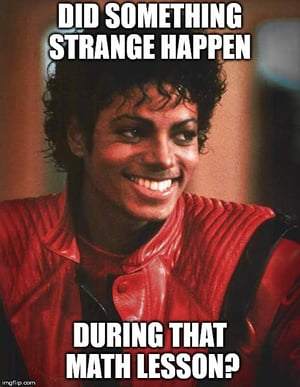 Congratulations, you’ve made it through the math lesson! So what do all these numbers and terms actually mean?
Congratulations, you’ve made it through the math lesson! So what do all these numbers and terms actually mean?
In real life, retail loss is an exaggerated figure, while wholesale loss is an undervalued figure. The real cost of this shrinkage falls somewhere in between these two figures.
At Bar-i, we typically take a conservative approach and estimate that the real cost of shrinkage is approximately twice as much as your wholesale loss. In our example, if you’re missing $25 of Jack Daniels, it probably equates to at least a $50 retail loss to your business.
Keep in mind that this is a conservative estimate. In general, your retail loss will be at least this high, and potentially even a little higher. A good ballpark range would be to estimate that the real cost of inventory shrinkage is 2-3 times as much as your wholesale loss. We prefer to err on the cautious side and stick to the lower end of this range when we make our estimates.
When you have the right data on the performance of your business, it’s easy to make the right decisions. We want to be confident in the data we provide and know how we arrived at these figures. That’s why we provide you with your wholesale loss, which we can accurately calculate, instead of the retail loss figure, which is just an estimate.
That being said, don’t underestimate the fact that in real life, this inventory shrinkage is actually costing you at least double the wholesale loss figure, and often more than double.
How will Reducing Inventory Shrinkage Benefit Your Profit Margin?
In real life, when you address this problem and reduce your inventory shrinkage, you can expect to see a 3-4% decrease in your liquor cost. We’ve arrived at this figure based on performing over 7,000 inventory audits. In general, once our clients get their shrinkage problem under control, they typically reduce their liquor cost roughly 3-4%.
You experience this reduction in liquor cost because you’re getting the same sales from the customers in your bar, but you’re using less product to get those sales. In time, most of our clients also find that their sales will increase (less overpouring often equates to more sales). This will compound with the lowered liquor cost to significantly increase your profits.
Reducing Inventory Shrinkage doesn’t Mean You can’t Comp Drinks
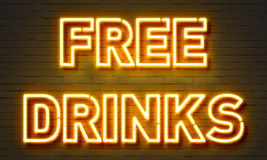 Just to be clear, the goal isn’t to ensure that 100% of the product served at your bar is sold at full price. At Bar-i, we recommend giving away drinks and offering drink specials, but this needs to be done consciously.
Just to be clear, the goal isn’t to ensure that 100% of the product served at your bar is sold at full price. At Bar-i, we recommend giving away drinks and offering drink specials, but this needs to be done consciously.
It’s good business to give away drinks to new customers on occasion in order to provide a great experience and entice them to come back regularly. Similarly, it’s good business to hook up regulars on occasion in order to make them feel special and valued. You can also significantly boost your sales and profits when you are strategic about the drink specials you offer.
The key is to approach discounted or free drinks in a smart way. You should always think through your comping policy in order to ensure it is being used to drive profits and not just increase the tips earned by your bar staff.
We typically recommend buying a customer a shot instead of comping a beer that was ordered. The perceived value (to the customer) of this free shot is the full price of the shot, while in reality it’s only costing you approximately $1 in product. Since this isn’t an item that the customer was planning to order, you’re not sacrificing any profits on the items they ordered at full price.
If you’d like to find out how Bar-i can help you streamline your processes and maximize your profits, please contact us today to schedule a free consultation. We serve clients nationwide from our offices in Denver, Colorado.


-1.png)